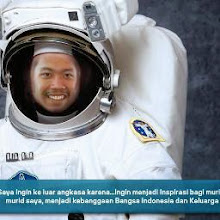Visi
Untuk Menciptakan Kemajuan dalam Bidang Ilmu Pengetahuan, Teknologi Kebumian dan Antariksa demi Keselamatan serta Kesejahteraan Umat Manusia
Misi
1. Inovasi dalam IPTEK Laboratorium Digital Kebumian dan Keantariksaan
2. Penelitian dalam IPTEK Laboratorium Digital Kebumian dan Keantariksaan
3. Pengembangan dalam IPTEK Laboratorium Digital Kebumian dan Keantariksaan
4. Pendidikan dalam IPTEK Laboratorium Digital Kebumian dan Keantariksaan
Program
1. Pembelajaran Teknik Geologi
2. Pembelajaran Geografi dan Lingkungan
3. Pembelajaran Fisika Antariksa
Fokus
Mineral (Minerals)
Mineral (Minerals) adalah bahan padat homogen bersifat anorganik yang terbentuk secara alamiah, memiliki ciri-ciri khas dan komposisi kimiawi tertentu serta tersusun oleh atom-atom yang biasanya memperlihatkan bentuk kristal yang khusus.
SISTEMATIKA MINERAL
Mineral Unsur Emas Au, Besi Fe, Tembaga Cu, Belerang S, Intan C
Mineral Sulfida Pirit FeS2, Kalkopirit CuFeS2, Galena PbS, Sfalerit ZnS
Mineral Halida Halit NaCl, Fluorit CaF2, Silvit KCl, Kriolit Na3AlF6
Mineral Oksida Hematit Fe2O3, Magnetit Fe3O4, Pirolusit MnO2
Mineral Karbonat Kalsit CaCO3, Dolomit CaMg(CO3)2, Malakit Cu2CO3(OH)2
Mineral Sulfat Barit BaSO4, Anhidrit CaSO4, Gipsum CaSO4.2H2O
Mineral Fosfat Apatit Ca5(PO4)3(F,Cl,OH), Monazit (Ce,La,Y,Th)PO4
Mineral Silikat Kuarsa SiO2, Olivin (Mg,Fe)2SiO4, Topaz Al2SiO4(F,OH)2
SISTEM KRISTAL
SIFAT FISIK MINERAL
- Warna (colour)
- Kilap (luster)
- Cerat/gores (streak)
- Belahan & Pecahan (cleavage & fracture)
- Kekerasan (hardness)
- Berat jenis (specific gravity)
- Radioaktivitas (radioactivity)
SKALA KEKERASAN MOHS
Kekerasan | Mineral | Rumus Kimia | Tes Sederhana |
1 | Talkum | Mg3SiO4O10(OH)2 | mudah digores kuku jari |
2 | Gipsum | CaSO42H2O | dapat digores kuku jari |
3 | Kalsit | CaCO3 | dapat digores koin tembaga |
4 | Fluorit | CaF2 | mudah digores pisau lipat |
5 | Apatit | Ca5(F,Cl)(PO4)3 | dapat digores pisau/kaca/paku |
6 | Ortoklas/Felspar | KalSi3O5 | dapat digores kikir baja |
7 | Kuarsa | SiO2 | mudah menggores kaca jendela |
8 | Topas | (Al,F)2SiO4 | mudah menggores Kuarsa |
9 | Korundum | Al2O3 | mudah menggores Topas |
10 | Intan | C | tidak dapat digores benda lain |
Mineral Logam (Metallic Minerals)
Mineral Non-Logam (Non-Metallic Minerals)
*Batu Mulia (Gemstones)
Batu Mulia adalah jenis batuan/mineral yang dianggap memiliki nilai lebih karena daya tarik dan alasan-alasan tertentu seperti keunikan, kelangkaan, kekerasan dan keindahan sehingga sangat cocok digunakan sebagai batu permata/perhiasan bahkan diyakini memiliki khasiat untuk terapi pengobatan, termasuk sebagai azimat.
BATU PERMATA (PRECIOUS STONE)
Batu permata adalah batumulia dengan kekerasan tertentu (>7 skala Mohs) yang apabila dipotong, dipoles dan diupam memiliki nilai hakiki, indah dan tahan terhadap berbagai pengaruh sehingga banyak dimanfaatkan sebagai perhiasan/asesoris, pajangan/ornamen atau dekorasi.
Founder by:
1. Ade Akhyar Nurdin
The Last Geolog in the World
2. Arip Nurahman
3. Ridwan Firdaus
Thanks To:
3.Earth - NASA Science
Powered by:
1. Museum Geologi Bandung
2. Laboratorium Ilmu Pengetahuan Bumi dan Antariksa, Pendidikan Fisika. FPMIPA. UPI Bandung
3. Departemen Teknik Geologi UNSOED
4. Departemen Pendidikan Geografi Universitas Negeri Jakarta

































